9-layer kuih lapis is one of the kids favourite kuih desserts. The most classic way of eating this kuih is by tearing it out piece by piece, put into the mouth and chew it slowly, so yummy! This is Nyonya version kuih lapis which has a chewy texture. The colours used in this recipe are from natural sources, the green colour is extracted from pandan leaves while blue colour is contributed by bunga telang (blue pea flower).
Some people may feel that blue colour food is weird, but to me it is better than using artificial food colourings. Without chemically produced artificial colourings, kids and parents can enjoy happily without worries!
Besides natural colouring from pandan leaves and blue pea flowers, you may also use different colour sweet potatoes to make beautiful 3-Colour Sweet Potato 9-Layer Kuih Lapis.
CHINESE VERSION: 天然三色九层糕

[ads1]
Natural 3-Colour 9-Layer Kuih Lapis | MyKitchen101en
Yield: 24 pieces
Ingredients for 9-Layer Kuih Lapis (total):
- 350 ml plain water
- 330 g fine sugar
- 1 tsp salt
- 330 ml thick coconut milk
- 285 g tapioca flour
- 90 g rice flour
- 45 g sago flour
- 2 pcs pandan leaves
- 80 ml pandan juice
- 50 ml blue pea / bunga telang juice
**Pandan juice: Blend 10 g of pandan leaves with 90 ml of water, measure out 80 ml of pandan juice.
Ingredients for each layer of 9-Layer Kuih Lapis:
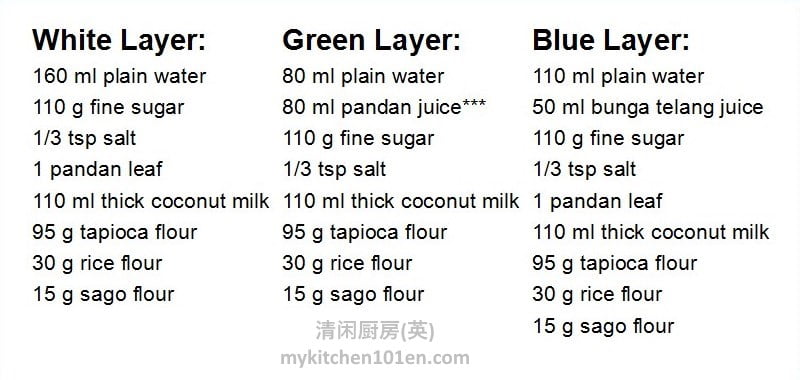
Instructions:
Preparation of ingredients:
1 White Layer: Combine water, sugar, salt and pandan leaf, heat up until sugar has dissolved. When cooled, discard pandan leaf and add in coconut milk and all flour. Mix until well combined and sieve through. Divide the white flour mixture into 3 equal portions (about 160 g each).
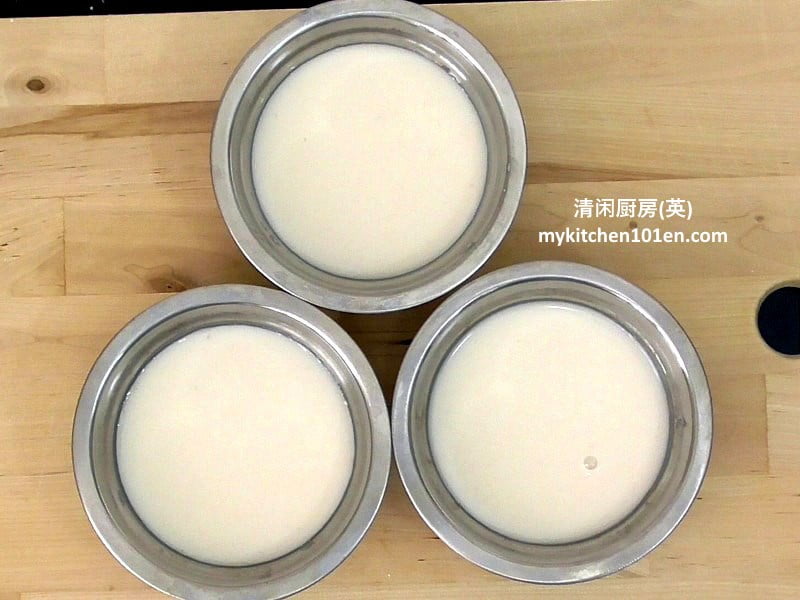
[ads1]
2 Green Layer: Combine water, pandan juice, sugar and salt, heat up until sugar has dissolved. When cooled, add in coconut milk and all flour. Mix until well combined and sieve through. Divide the green flour mixture into 3 equal portions (about 160 g each).
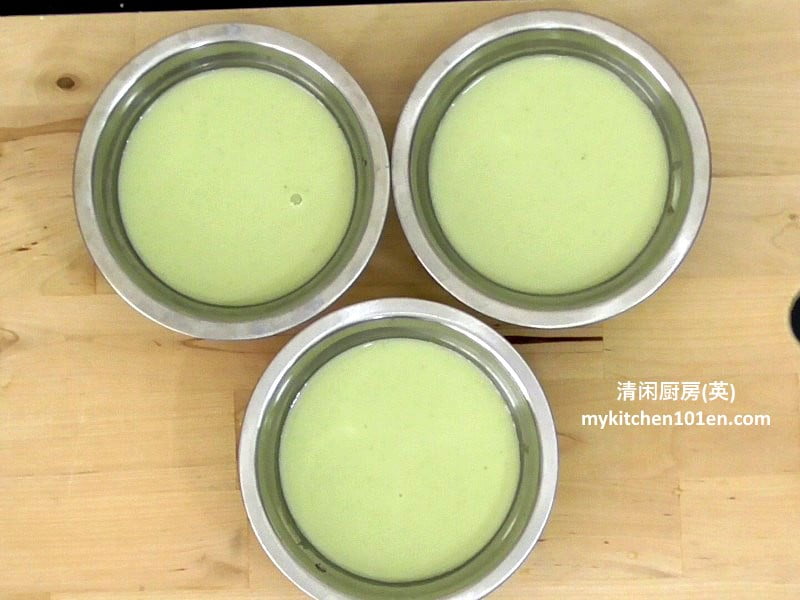
3 Blue Layer: Combine water, bunga telang juice (blue pea flower juice), sugar, salt and pandan leaf, heat up until sugar has dissolved. When cooled, discard pandan leaf and add in coconut milk and all flour. Mix until well combined and sieve through. Divide the blue flour mixture into 3 equal portions (about 160 g each).

[ads1]
Steaming of 9-Layer Kuih Lapis:
1 Coat 8-inch (20-cm) square baking pan with some oil.

2 Bring water of steamer to the boil and put in the baking pan. Stir 1 portion of white mixture to mix well, then pour into the pan. Steam over high heat for 3 mins 30 secs.

3 Stir 1 portion of green mixture to mix well, pour over the cooked white layer. Steam over high heat for 3 mins 30 secs.

4 Stir 1 portion of blue mixture to mix well, pour over the cooked green layer. Steam over high heat for 3 mins 30 secs.
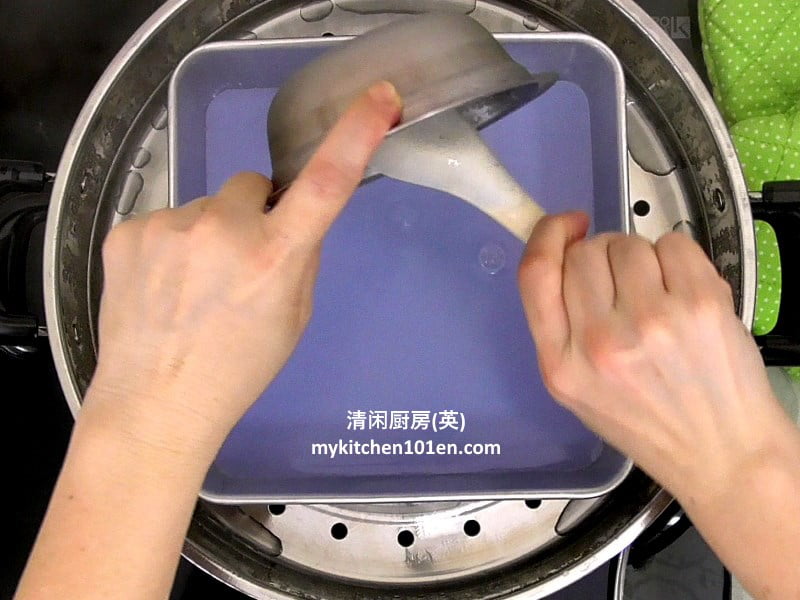
5 Repeat the same steps, until all mixture has been used up. After pouring in the last layer, steam over high heat for 4 minutes, then reduce to medium heat and steam for another 10 minutes.
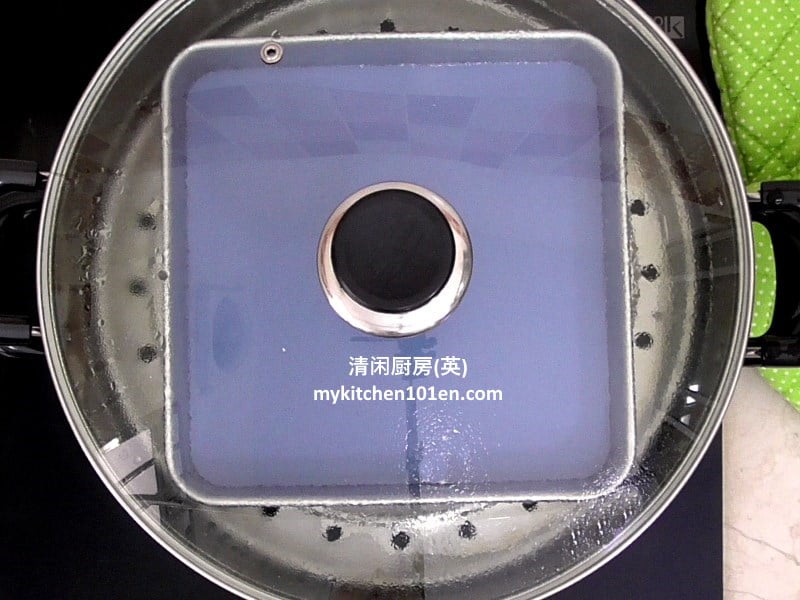
6 Set aside to cool completely (you may soak the pan in cold water to speed up the process).
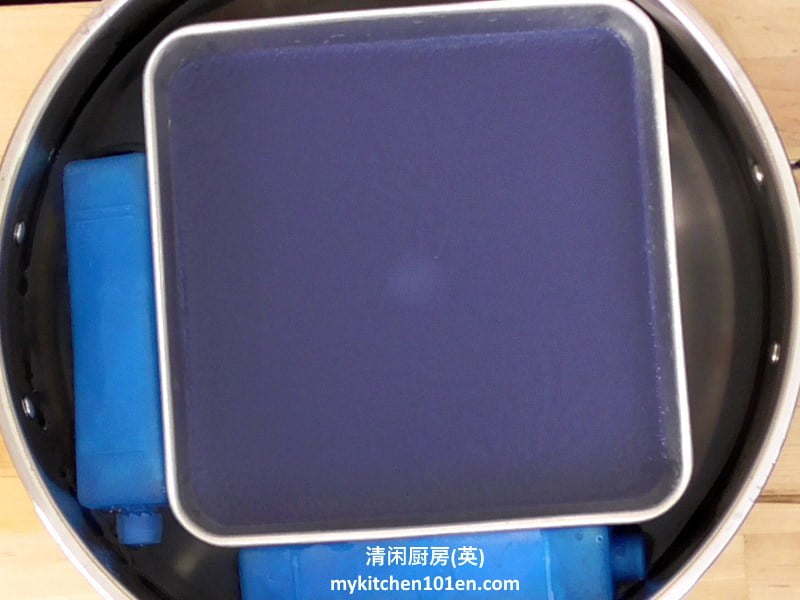
7 When cooled, cut into small pieces using a plastic knife.
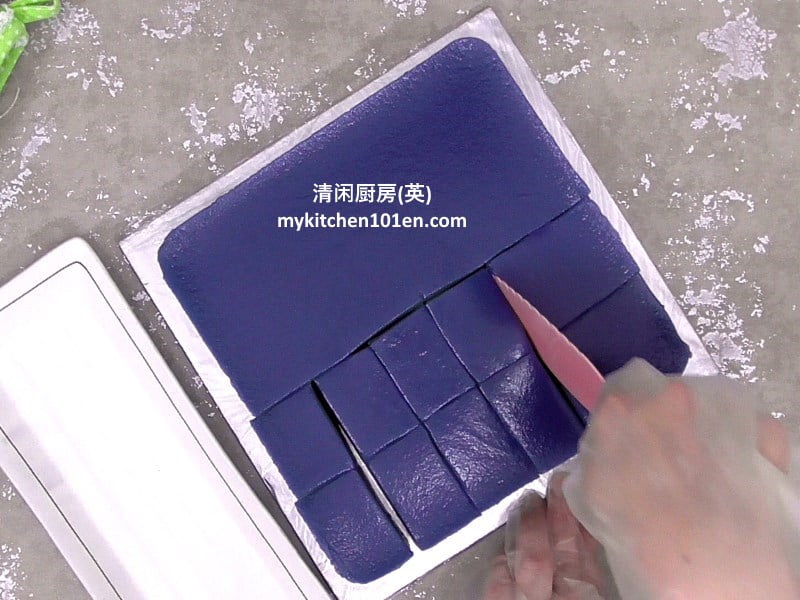
Tips for making 9-layer kuih lapis (sharing of personal experience):
- The water in the steamer must be rolling boiled before mixture is poured into the pan.
- The mixture must be stirred to mix well before it is poured into the pan (as starches will settle at the bottom after sitting for a while).
- The mixture must be steamed over high heat so that it is cooked within the shortest time (to avoid the settlement of starches).
- If you were to add hot water to steamer during halfway of cooking, only do so when the previous layer is cooked. After adding in the water, bring it to fully boiled again before adding in another portion of mixture.

Natural 3-colour 9-layer Kuih Lapis
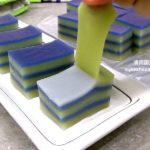
This is a Nyonya version kuih lapis which has a chewy texture. The colours used in this recipe are from natural sources,
- square baking pan
- 350 ml plain water
- 330 g fine sugar
- 1 tsp salt
- 330 ml thick coconut milk
- 285 g tapioca flour
- 90 g rice flour
- 45 g sago flour
- 2 pcs pandan leaves
- 80 ml pandan juice (Blend 10 g of pandan leaves with 90 ml of water measure out 80 ml of pandan juice)
- 50 ml blue pea / bunga telang juice
Ingredients for each layers:

Preparation of ingredients:
White Layer: Combine water, sugar, salt and pandan leaf, heat up until sugar has dissolved. When cooled, discard pandan leaf and add in coconut milk and all flour. Mix until well combined and sieve through. Divide the white flour mixture into 3 equal portions (about 160 g each).
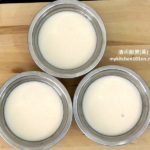
Green Layer: Combine water, pandan juice, sugar and salt, heat up until sugar has dissolved. When cooled, add in coconut milk and all flour. Mix until well combined and sieve through. Divide the green flour mixture into 3 equal portions (about 160 g each).
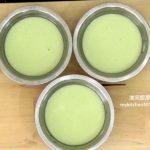
Blue Layer: Combine water, bunga telang juice (blue pea flower juice), sugar, salt and pandan leaf, heat up until sugar has dissolved. When cooled, discard pandan leaf and add in coconut milk and all flour. Mix until well combined and sieve through. Divide the blue flour mixture into 3 equal portions (about 160 g each).
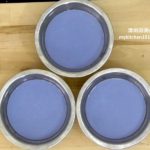
Steaming of 9-Layer Kuih Lapis:
Bring water of steamer to the boil and put in the baking pan. Coat 8-inch (20-cm) square baking pan with some oil.
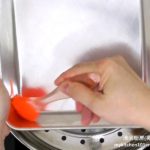
Stir 1 portion of white mixture to mix well, then pour into the pan. Steam over high heat for 3 mins 30 secs.
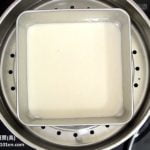
Stir 1 portion of green mixture to mix well, pour over the cooked white layer. Steam over high heat for 3 mins 30 secs.

Stir 1 portion of blue mixture to mix well, pour over the cooked green layer. Steam over high heat for 3 mins 30 secs.
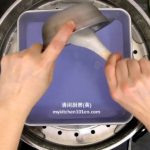
Repeat the same steps, until all mixture has been used up. After pouring in the last layer, steam over high heat for 4 minutes, then reduce to medium heat and steam for another 10 minutes.
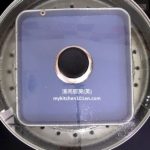
Set aside to cool completely (you may soak the pan in cold water to speed up the process).
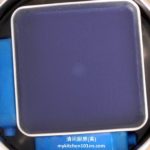
When cooled, cut into small pieces using a plastic knife.
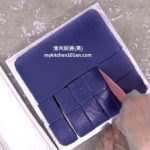
This recipe yields a 8-inch square kuih divided into 24 pieces.
The nutritional value for reference is for 1 piece of kuih.
Tips for making 9-layer kuih lapis (sharing of personal experience):
1 The water in the steamer must be rolling boiled before mixture is poured into the pan.
2 The mixture must be stirred to mix well before it is poured into the pan (as starches will settle at the bottom after sitting for a while).
3 The mixture must be steamed over high heat so that it is cooked within the shortest time (to avoid the settlement of starches).
4 If you were to add hot water to steamer during halfway of cooking, only do so when the previous layer is cooked. After adding in the water, bring it to fully boiled again before adding in another portion of mixture.
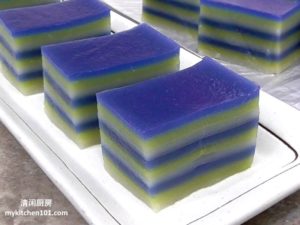

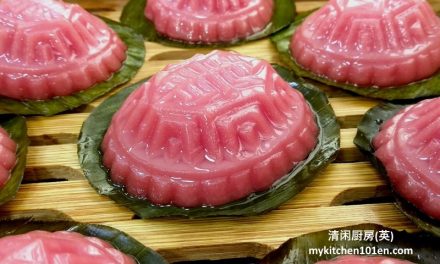

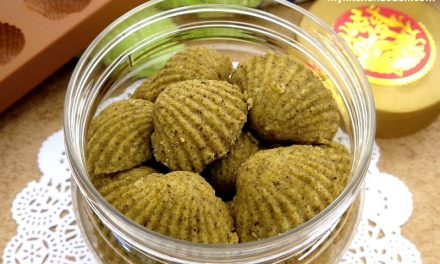
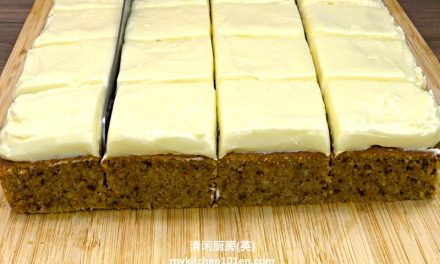
I love these and every time I would eat it layer by layer, pink & white ?
It’s so beautiful and delicious but dangerous for diabetes. Most desserts are.
Wonder where to buy Sago flour in USA, anyone knows?
You may replace with tapioca flour, just the texture will be slightly different.
Can you freeze this?
Never try.